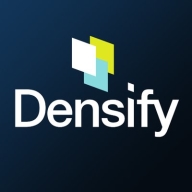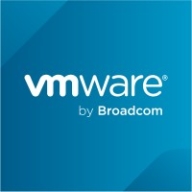

VMWare Tanzu CloudHealth and Densify are competing products in the cloud management space. While both deliver comprehensive cloud management capabilities, Densify seems to have the upper hand in terms of detailed resource optimization and predictive analytics.
Features: VMWare Tanzu CloudHealth provides robust cost management, multi-cloud support, and dynamic policy enforcement. Densify focuses on real-time analytics, precise performance optimization, and predictive capacity planning. Densify's detailed resource optimization offers deeper insights into capacity management.
Room for Improvement: VMWare Tanzu CloudHealth could enhance its resource optimization detail and predictive analytics features. Users have noted that its interface could be more intuitive and reporting tools made more flexible. Densify might improve pricing transparency, expand its multi-cloud integration scope, and enhance user navigation within the platform.
Ease of Deployment and Customer Service: VMWare Tanzu CloudHealth offers flexible deployment options and reliable customer support. Densify highlights streamlined setup processes and proactive support which users find simple and effective. Densify's emphasis on support responsiveness is a noted advantage.
Pricing and ROI: VMWare Tanzu CloudHealth offers competitive pricing aimed at maximizing ROI through cost tracking and resource allocation. Densify, though potentially higher in upfront costs, shows strong ROI via advanced optimization capabilities allowing for long-term savings and improved performance. Its cost-justified features provide strategic value for comprehensive resource management.
| Product | Market Share (%) |
|---|---|
| VMWare Tanzu CloudHealth | 1.9% |
| Densify | 0.9% |
| Other | 97.2% |


| Company Size | Count |
|---|---|
| Small Business | 1 |
| Midsize Enterprise | 1 |
| Large Enterprise | 9 |
| Company Size | Count |
|---|---|
| Small Business | 4 |
| Midsize Enterprise | 2 |
| Large Enterprise | 4 |
Densify is a hybrid cloud and container resource management platform that makes workloads self-aware of their precise resource requirements and automates the resource management and selection process. This solution helps you control your cloud spend and also helps your apps perform and scale better. Densify enables you to match your cloud requirements with the optimal cloud supply. Additionally, Densify is the only technology that leverages patented, predictive machine learning-powered analytics to perform advanced modeling of workload patterns, and provide precise optimization directives. It is ideal for cloud engineers, container platform owners, and IT finance.
Densify works by:
Densify Features
Densify has many valuable key features. Some of the most useful ones include:
Densify Benefits
There are many benefits to implementing Densify. Some of the biggest advantages the solution offers include:
VMware Tanzu CloudHealth, formerly known as VMware Aria Cost Powered by CloudHealth, is a specialized cloud management platform tailored for Multi-Cloud Cost Optimization. It offers comprehensive visibility into cloud spending across various providers, enabling users to identify areas for optimization and make informed resource allocation decisions. With features like reserved instance management, resource rightsizing, and automated cost governance policies, it facilitates financial management for optimal cost efficiency. Beyond cost optimization, Tanzu CloudHealth enhances cloud operations through workload optimization and governance automation, catering to multi-cloud environments encompassing public, private, and hybrid clouds. Its primary focus remains on enabling organizations to effectively manage and reduce cloud expenditures while supporting operations across diverse cloud platforms.
We monitor all Cloud Management reviews to prevent fraudulent reviews and keep review quality high. We do not post reviews by company employees or direct competitors. We validate each review for authenticity via cross-reference with LinkedIn, and personal follow-up with the reviewer when necessary.